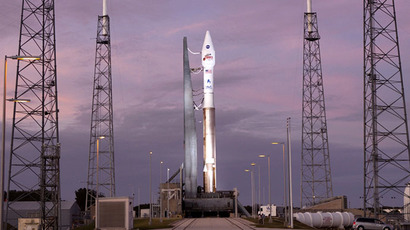Scientists release most thorough map yet of Mars

Scientists in the United States have produced a new map of Mars that experts say is unprecedented in detail and reveals previously unknown information about the Red Planet.
On Monday, the US Geological Survey (USGS) published its new global geologic map of Mars, created by the agency with the help of four orbiting spacecraft that have spent 16 years in the sky collecting imagery.
In an abstract that accompanies the official release of the map, the scientists responsible write that their latest creation was made possible with the aid of “unprecedented variety, quality and quantity of remotely sensed data” captured by three NASA spacecraft — the Mars Global Surveyor, Mars Odyssey and the Mars Reconnaissance Orbiter — along with the European Space Agency's Mars Express probe.
According to Popular Science, the map uses more than 600 million individual altitude measurements to make most thorough map yet of the Red Planet.
"Spacecraft exploration of Mars over the past couple decades has greatly improved our understanding of what geologic materials, events and processes shaped its surface," USGS scientist and lead author, Dr. Kenneth Tanaka said in a statement this week. “The new geologic map brings this research together into a holistic context that helps to illuminate key relationships in space and time, providing information to generate and test new hypotheses.”
"Findings from the map will enable researchers to evaluate potential landing sites for future Mars missions that may contribute to further understanding of the planet’s history," added USGS Acting Director Suzette Kimball. "The new Mars global geologic map will provide geologic context for regional and local scientific investigations for many years to come."
Indeed, the map has already revealed that the Martian surface is older than previously thought, and that Mars was geologically active until present time. According to the new map, three times more of the surface area on the planet was formed during the Early Noachian Epoch than originally thought.

Additionally, journalists at Popular Science write that the new map shows that most of Mar’s biggest craters appear to have formed during that same era, which occurred around 3.7 billion to 4.5 billion years ago.
Last month, inventor and entrepreneur Elon Musk said during an interview with CNBC that he hopes he can take humans to Mars in only 10 years’ time.
“I think it's certainly possible for that to occur," Musk said."But the thing that matters long term is to have a self-sustaining city on Mars, to make life multi-planetary."
Should Musk’s plans come to fruition, then the first residents of the Red Planet — as far as we know — now have a detailed new map ready and waiting for their arrival.














